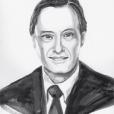Federal Reserve Chairman Ben Bernanke may feel the weight of the world economy on his shoulders as global growth, especially in the U.S., is flagging and as financial markets wonder if anything can be done about it. Central banks from Europe to Canada to China are already raising interest rates. Any new bold action by the Fed faces stiff opposition, both within the Fed and in some areas of Congress, and, despite weakening economies, fiscal policy in both the U.S. and Europe is turning restrictive.
In his much anticipated speech today at the annual symposium for central bankers in Jackson Hole, Wyo., Bernanke talked about the Fed’s weighty burden, but he didn’t offer new stimulus measures. While Bernanke sounded reassuring about the Fed’s belief that U.S. growth will pick up modestly in the second half of 2011, after the first half’s sudden slowdown, he said the long run was in the hands of fiscal policy. And he warned that efforts at fiscal sustainability should not “disregard the fragility of the current recovery.” Although he did not refer to any specific new policy actions, he did say the policy committee would hold a two-day meeting on Sept. 20-21, instead of the previously scheduled one-day meeting, “to allow a fuller discussion” of the Fed’s policy options. That appeared to hold out the possibility of additional action, and it bought the Fed more time. The market reaction was positive, and at 1 p.m. the Dow was up by more than 120 points.
The Fed chairman repeated his belief that much of the first-half slowdown was due to temporary depressants, including the jump in oil prices, disruptions to auto output and sales caused by the Japanese disaster, and the hit to confidence from the debt ceiling debacle and the debt crisis in Europe. Just prior to the Fed chief’s remarks, the Commerce Dept. downgraded its initial estimate of second-quarter GDP growth, to only 1 percent, from the 1.3 percent pace reported a month earlier, which followed growth of only 0.4 percent in the first quarter.
However, he also repeated his warning to Congress in July, saying the economy’s weakness might be more persistent than expected and that deflationary risks could reemerge. Bernanke said that the policy committee has “marked down its outlook for the likely pace of growth over coming quarters” and that inflation is expected to settle “at levels at or below the rate of 2 percent.” That forecast would not rule out further policy stimulus at the September meeting, and may well be viewed by some policymakers as a rationale for more action.
Bernanke said financial stress continues to be “a significant drag on the recovery, both here and abroad.” Based on comments by some Fed officials, the Fed’s Aug. 9 commitment to keep the target federal funds rate near zero for the next two years was influenced by tighter credit conditions that arose with market volatility in early August. To date, based on certain market measures, that tightening has not fully reversed, which could be a factor in additional Fed action in September.
Going into the speech, economists at UBS said Bernanke’s main objective would be to calm the financial markets and buy time to evaluate the data and the need for more policy action. Despite no new policy pronouncements, the markets seemed willing to wait and see what comes out of the September meeting.
The September discussion will most likely center around the policy choices already on the table. Perhaps disappointing to some on Wall Street, Bernanke made no reference to a third round of quantitative easing, or QE3, involving large-scale asset purchases. In previous remarks, the Fed chief has made it clear that a QE3 would be contingent upon a renewed risk of deflation, which sets a high bar for that particular action. Core inflation, which excludes the recent cool-down in energy and food prices, is accelerating. The Fed’s preferred gauge shows a 2.1 percent annual rate of core inflation in the six months through June, up from 0.6 percent in the previous six months.
QE3 would likely be the most potent of the options now on the table, but for now the benefit does not appear to outweigh the potential cost. Not only is the current trend in inflation prohibitive but any further expansion of the Fed’s $2.9 trillion balance sheet would meet heavy opposition.
Some Fed policymakers publicly questioned the need for QE2, along with other vocal Fed critics in Congress, saying that the policy would fuel inflation and debase the dollar. Plus the impact was small and did not prevent the sharp slowdown in first-half economic growth. Even the Fed’s Aug. 9 policy action garnered a rare three dissenting votes from members of the policy committee.
Economists believe two other possible actions are more likely, should the Fed feel the need to take them. One is a kind of “Operation Twist,” which was the name of a somewhat similar policy in the 1960s. In the 21st century version, the Fed would not increase the size of its balance sheet, as would happen with QE3, but it would shift the composition of its holdings toward more long-term securities. The effect would be to further lower long-term borrowing rates. The move might ease some concerns that the Fed’s balance is ballooning out of control. Economists at J.P. Morgan think this could be an option at one of the Fed’s next two meetings.
Another possibility would be encourage more lending by lowering the 0.25 percent interest rate the Fed currently pays banks to keep their $1.6 trillion in excess funds on deposit at the central bank. Those funds are available for banks to lend out, but banks can choose to let them sit and soak up a risk-free quarter-percent. Reducing the interest on excess reserves lowers the incentive to hold these funds at the Fed and increases the incentive to lend them out. Some economists, including former Fed governor Alan Blinder, have suggested the Fed could even charge a penalty for banks who want to park their funds at the Fed—a sort of negative interest rate.
The trouble is that any of the options discussed by Bernanke would only nip around the edges of a much greater problem. At a time when the unemployment rate remains above 9 percent after two years of recovery and when the economy is not growing fast enough to bring it down, bold action from either monetary or fiscal policy is not a possibility. J.P. Morgan economist Michael Feroli notes that when the recoveries after the 1990-91 and 2000 recession faltered, they were bolstered by strong policy support. In 2011, says Feroli, “with monetary authorities willing but unable to ease and fiscal authorities able but unwilling, such a sanguine outcome can’t be taken as a given.”






